Daily winners 28.6.
| Club Class | |
| Rasmus Ørskov 1F, Denmark |
 |
| Standard Class | |
| Sebastian Kawa I, Poland |
 |
| 20 m Multi-Seat Class | |
| Steve Jones & Howard Jones CUS, Great Britain   |
|
Tasks and results:
www.wgc2014.fi/results
IGC-files
Tracking
1.7. Tracking
Club class, Standard class and 20 m Multi-seat class
Outlandings
Weather
- EFRY weather station
- RASPtable
- Helsinki Testbed
- Aviation Weather
- ilmanet.fi
user: efrymet
pw: mmkisa2014
Partners
Getting Ready for Racing: Technical Inspections
by Visa Hietalahti
One of the pre-competition routines at the level of world championships is scrutineering. In scrutineering, or technical inspection, each of the gliders is verified to comply with the rules and limitations of its class.
Besides the general airworthiness of the glider the most obvious points to check are the wingspan and total weight, both of which are major factors in gliding performance. The significance of added wingspan is that it improves the overall performance by giving more lift. Added weight in turn improves high-speed characteristics.
Since manufacturers control the wingspan carefully, any discreapancy on it is unlikely. It is checked once before the competition, anyway, and details of the plane are photographed as a backup for possible later checks.
In the Standard and 20m Classes using water ballast is allowed, so the total weight can vary from day to day. The normal flight procedure for water ballasts is that a glider is loaded with water to the maximum allowable weight before a competition flight and the water is emptied before landing. For this reason gliders will be reweighed on every day of the competition.
Ideally, the pre-competition inspection takes about 15 minutes, provided that the glider is brought in with the correct maximum weight and that all things in the glider are in proper order. At Räyskälä, the procedure has been speeded up by letting the competitors fill in a form in advance, giving all the necessary details. The inspection crew is then mainly left with the actual weighing and wingspan measurement besides checking that the information given by the pilot is correct.
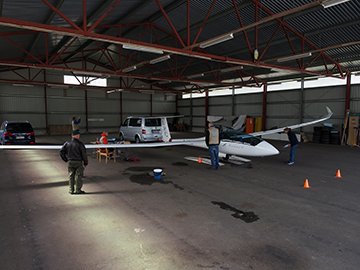
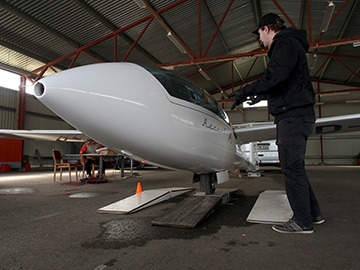
1. In with the glider and onto the scale.
2. First, the combined weights of the main wheel and tail wheel.
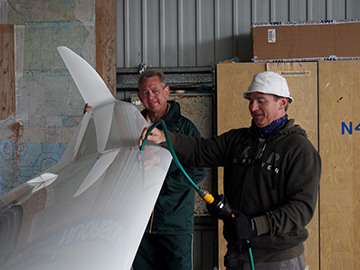
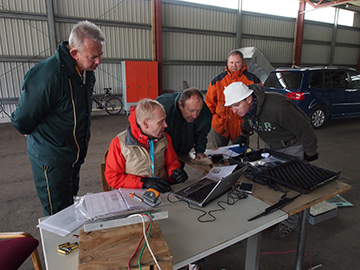
3. If below maximum weight, fill in.
4. Everything OK now?
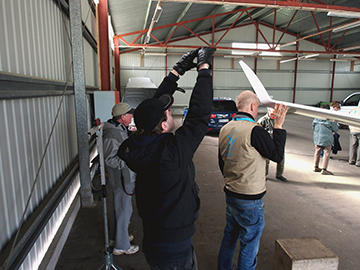
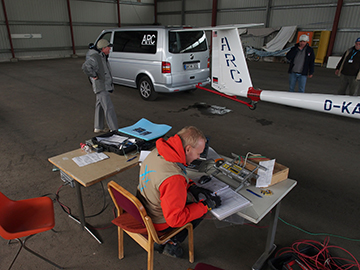
5. Photographing the details of the wing tip.
6. Finally, the reference weight for daily measurements, with the ground transportation gear in place.
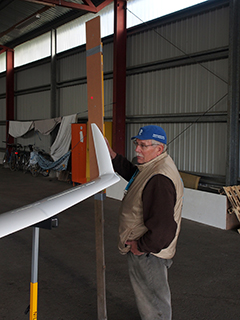
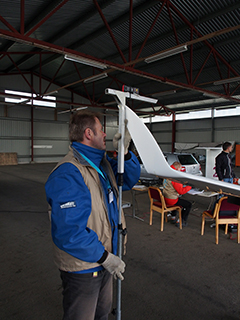 7. Measuring the wing span with a laser.
7. Measuring the wing span with a laser.
8. At the other wing tip there must be a reference plate to aim the laser beam at.
| Web design by: Internexus |



